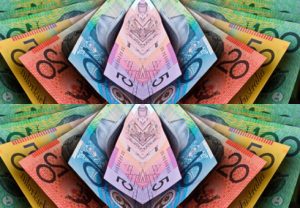Australian Dollar boost from price rise
15 August 2016 by News DeskAustralian Dollar suffered with underwhelming data from China, one of Australia’s biggest trade partners.
 Australian Dollar was impacted by data that suggested Australian commodity demand could diminish towards the end of the year, according to currency specialists TorFX
Australian Dollar was impacted by data that suggested Australian commodity demand could diminish towards the end of the year, according to currency specialists TorFX
Chinese industrial production came in at 6.0% despite market projections of 6.2%, and retail sales slowed from 10.6% to 10.2%. A low amount of new credit was made available, weighing on hopes of high iron ore demand in coming months.
Despite this, prices of the commodity climbed at the beginning of the new week, boosting the iron ore-correlated Australian Dollar across the board and causing GBP/AUD to lose some of its Friday gains.
New Zealand Dollar (NZD) – The Pound has managed to avoid trending at its worst levels vs. the New Zealand Dollar by the end of last week, as fresh Chinese data weighed on Asian trade expectations.
The ‘Kiwi’ Dollar has a real chance to advance once again this week however. If the US Dollar remains weak and investors continue to be interested in risky investments, the ‘Kiwi’ could surge, particularly if this week’s dairy auction ends with higher prices of dairy (NZ’s most lucrative commodity). Wednesday’s New Zealand unemployment figures could also boost the New Zealand Dollar if they beat expectations, but a worse-than-expected score would have the opposite effect.
Australian Dollar boost from price rise
Pound Sterling (GBP) – Sterling ended the week on a negative note, once again being crowned 2016’s worst performing major currency as the Bank of England’s (BoE) latest easing measures began to take hold.
The Pound is currently performing even worse than the Mexican Peso (lacking appeal due to risk aversion) and the Argentine Peso (falling due to removal of capital controls).
Friday’s data had little influence on Sterling, but revealed that UK Construction had shrunk -2.2% as of June. This data was collected before the EU Referendum, but July construction PMIs released in recent weeks have indicated that the construction sector continued to contract.
US Dollar (USD) – The Pound fell to a new monthly low against the US Dollar, losing out even after a US Dollar selloff began in the afternoon as British economic fears left Sterling thoroughly unappealing.
The latest US retail sales report heavily disappointed US markets, coming in at 0.0% rather than the 0.4% forecast. The University of Michigan’s consumer confidence survey also dropped to 90.4, letting down expectations of a 91.5 score.
The low retail sales figure weighed especially on already weak Federal Reserve rate hike bets. Analysts had previously hoped that positive US data could persuade the Fed to hike interest rates at least once before 2017, but following last week’s data many analysts predict the Fed will not act at all this year. Fed rate hike bets have fallen from 55% to 42% in the last week.
Euro (EUR) – The Pound to Euro exchange rate tumbled to new three-year-lows throughout last week, plunging lower on Friday as the Euro capitalised on a weak Sterling.
The Eurozone’s latest growth figures were mixed, but ultimately helped the Euro become one of the day’s most appealing currencies. German growth came in at 0.4% in Q2 according to the preliminary report, double the expected 0.2%. Unfortunately, stagnancy in the Italian and French economies weighed on the Eurozone’s overall score, meaning it came in at 0.3% as expected rather than printing a bumper score. News that Eurozone industrial production returned to growth also boosted Euro appeal.
The Euro was able to capitalise on a mixture of weak British economic prospects and another rush selloff of the US Dollar, leaving the shared currency stronger on Friday.
Canadian Dollar (CAD) – The Pound to Canadian Dollar exchange rate lost around a cent on Friday as the Canadian Dollar strengthened across the board. GBP/CAD currently trends around low levels not seen since November 2013.
The ‘Loonie’ Dollar was able to easily capitalise on a weak Pound towards the end of last week, as prices of oil (Canada’s primary export) engaged in a surprise rally. A statement from Saudi Arabia’s oil minister indicated last week that more oil producing nations from OPEC were considering an oil production freeze in order to improve demand for the commodity.
After falling below US$40 per barrel in recent weeks, oil prices have since recovered to over US$47 per barrel as hopes of a more long-term price recovery drive markets. This has left the ‘Loonie’ Dollar sturdy on Monday morning.
Learn more about the Australian Dollar – Contact TorFX: Get A Quote
Want to live and work Down Under? Click here for expert help: Skilled Migration to Australia
Want to get a job Down Under? Click here for expert help: How to Get a Job in Australia
Click here for expert help with travel visas: Travel Visas to Australia
Click here for tourist information about Australia: Visit Australia


